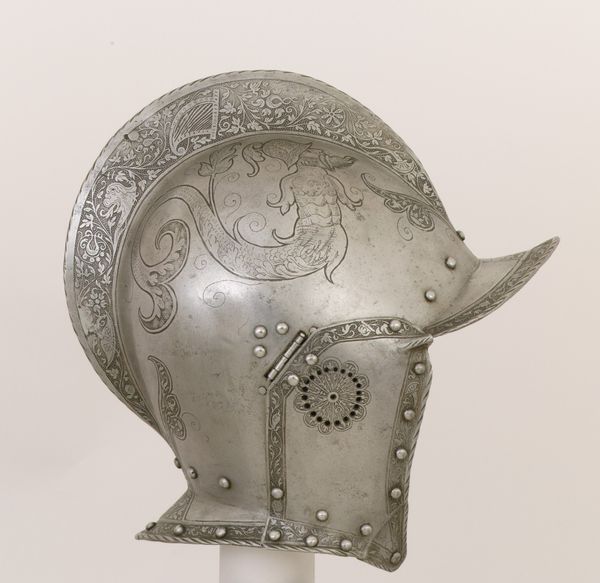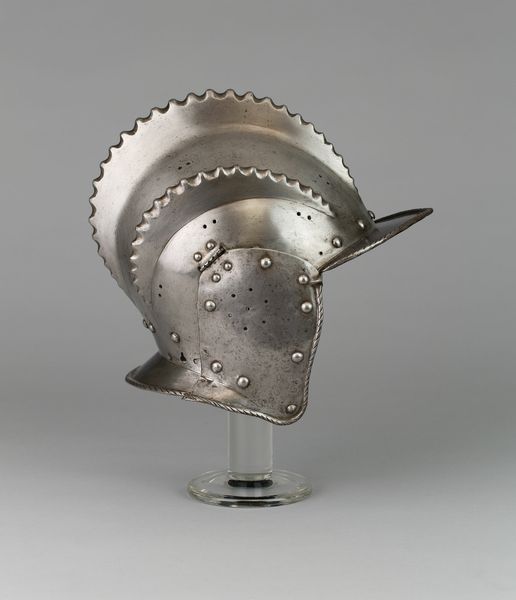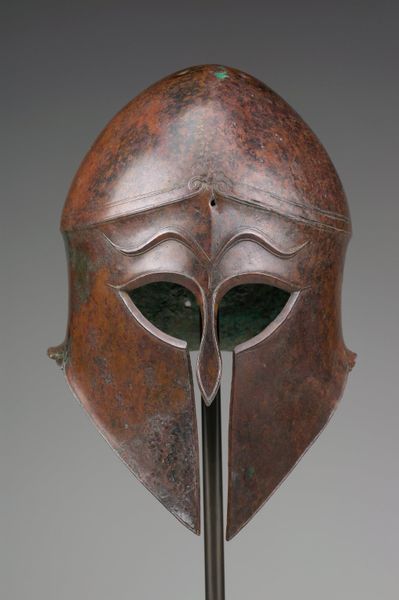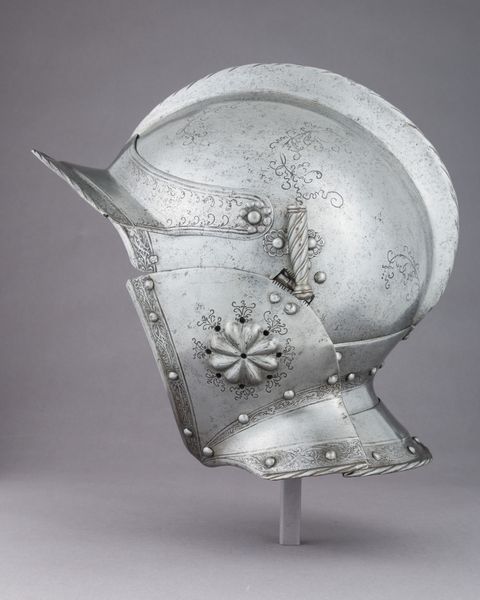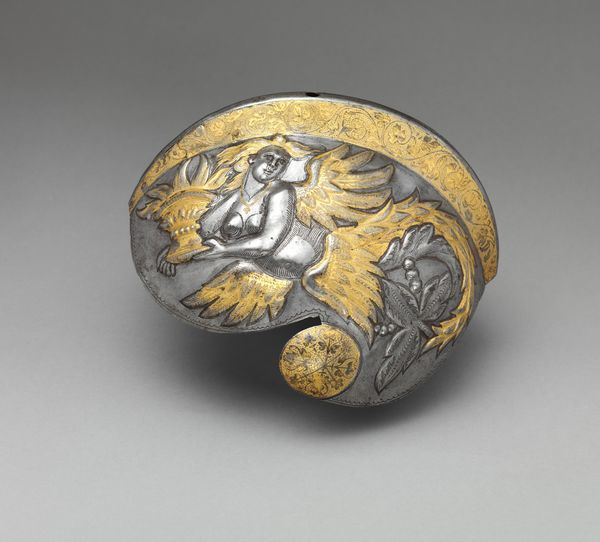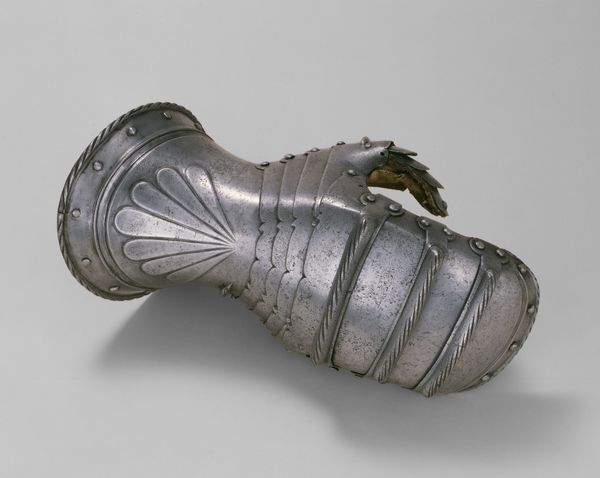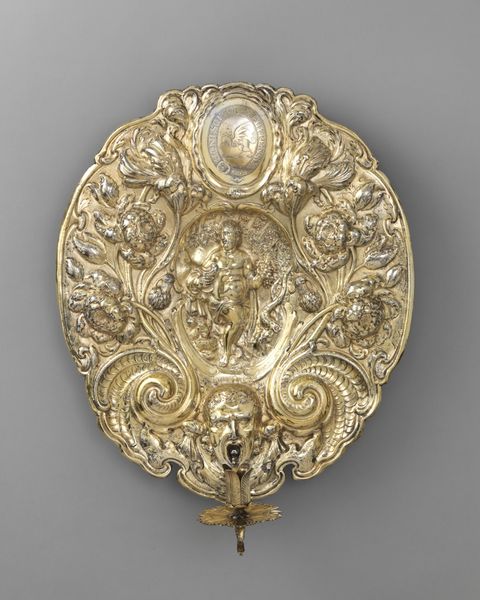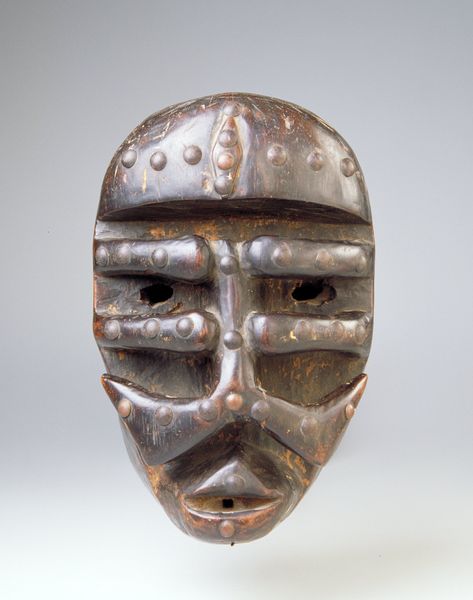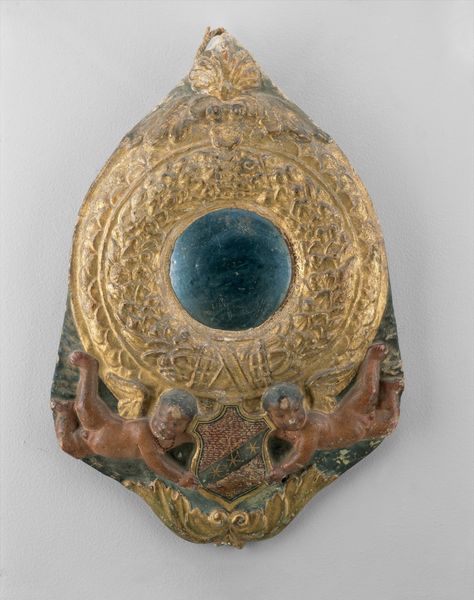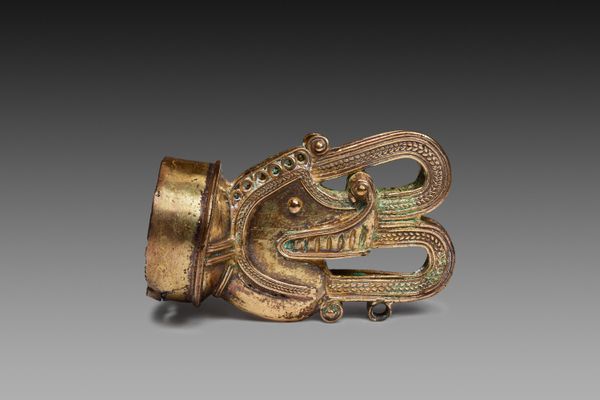
metal, sculpture
#
medieval
#
metal
#
sculpture
#
11_renaissance
#
sculpture
#
armor
#
decorative-art
Dimensions: H. 10 3/4 in. (27.3 cm); W. 11 1/2 in. (29.2 cm); D. 15 in. (38.1 cm); Wt. 6 lb. 8 oz. (3068 g)
Copyright: Public Domain
Editor: This is a Close Helmet from sometime between 1515 and 1570, currently residing here at the Met. It's made of metal, and attributed to Giovan Paolo Negroli. I’m really struck by how incredibly ornate it is. What stands out to you about it? Curator: What I find compelling is the pronounced interplay of form and surface articulation. Note the elegant curves that define the helmet’s overall structure. Then, consider the intricate surface embellishments – the floral motifs and the bestial cresting. How do these contrasting elements contribute to the work’s overall aesthetic impact, would you say? Editor: Well, the floral patterns and those beastly figures are really in contrast. The metal medium, though, it kind of smooths it together. Do you think that contrast has some greater symbolism to the viewer, if the individual were back in the renaissance period? Curator: Symbolism is always a consideration, of course. However, from a formalist perspective, the juxtaposition heightens visual interest and engages the eye. Consider the craftsman’s skill in rendering such detailed ornamentation on a functional object. It’s the manipulation of the material and the precise execution of the design that truly captivates. Look closer, what is your analysis of this material, from a more structural level? Editor: Looking closer, I can see the tooling work in the helmet itself. The craftsman worked to combine function and art. Even the rivets are evenly spaced. The texture of the floral patterns stands out in an interesting manner, for it adds complexity in comparison to its basic structure. Curator: Precisely. The tension between utility and decoration creates a dynamic visual experience. This object transcends mere functionality. Editor: I hadn’t really thought about it that way before, but now I appreciate how the form itself communicates even beyond its potential function. Curator: Indeed. And that's precisely the point of formalist inquiry – decoding art through attentive visual analysis.
Comments
No comments
Be the first to comment and join the conversation on the ultimate creative platform.

